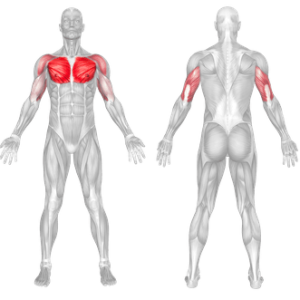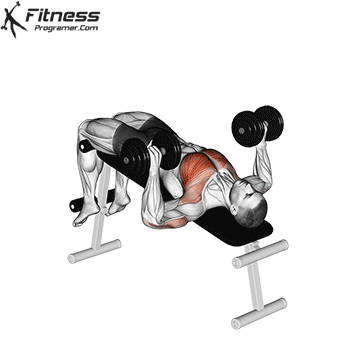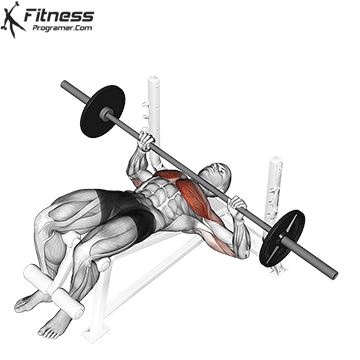Decline Dumbbell Press Overview
The Decline Dumbbell Press is a variation of the traditional bench press where the bench is set at a declined angle (usually between 15-30 degrees downward), and dumbbells are used instead of a barbell. This exercise specifically targets the lower portion of the pectoralis major (lower chest) while also engaging the triceps and anterior deltoids (front shoulder muscles).
How to Perform the Decline Dumbbell Press
Setup
- Set a decline bench at a 15–30 degree angle.
- Grab a pair of dumbbells and sit on the bench with your feet secured under the support pads.
- Lie back with the dumbbells held at shoulder level, palms facing forward, and elbows bent at about a 90-degree angle.
Execution
- Press Upward: Exhale as you press the dumbbells upward in a smooth, controlled motion until your arms are fully extended (but not locked).
- Lower Slowly: Inhale as you lower the dumbbells back to the starting position, maintaining control and ensuring the elbows stay slightly below chest level for a deep stretch.
- Repeat for the desired number of repetitions.
Tips for Effectiveness
- Focus on Form: Prioritize proper form over heavy weights to maximize effectiveness and safety.
- Squeeze at the Top: Contract your chest muscles at the peak of the movement for optimal engagement.
- Controlled Tempo: Use a slow and controlled tempo to maintain tension on the chest muscles.
- Pair with Incline and Flat Presses: Combine with other bench press variations for complete chest development.
Common Mistakes
- Flared Elbows: Keep elbows at a 45-degree angle to reduce shoulder strain.
- Excessive Weight: Using too much weight can compromise form and increase injury risk.
- Rushed Reps: Perform the movement slowly to maximize control and engagement.
- Incorrect Bench Angle: Ensure the decline angle is not too steep, as this can reduce chest activation and place undue strain on the shoulders.
Benefits Of Decline Dumbbell Press
- Lower Chest Development: Specifically targets the sternal head, creating a more balanced and sculpted chest.
- Improved Range of Motion: Dumbbells allow for a deeper stretch and greater contraction compared to barbell variations.
- Symmetry and Balance: Each side works independently, helping to correct muscle imbalances.
- Strength Transfer: Improves pressing power for movements like dips and push-ups.
- Joint-Friendly Option: Offers a natural movement path, reducing stress on the shoulders compared to some barbell exercises.
Muscles worked



